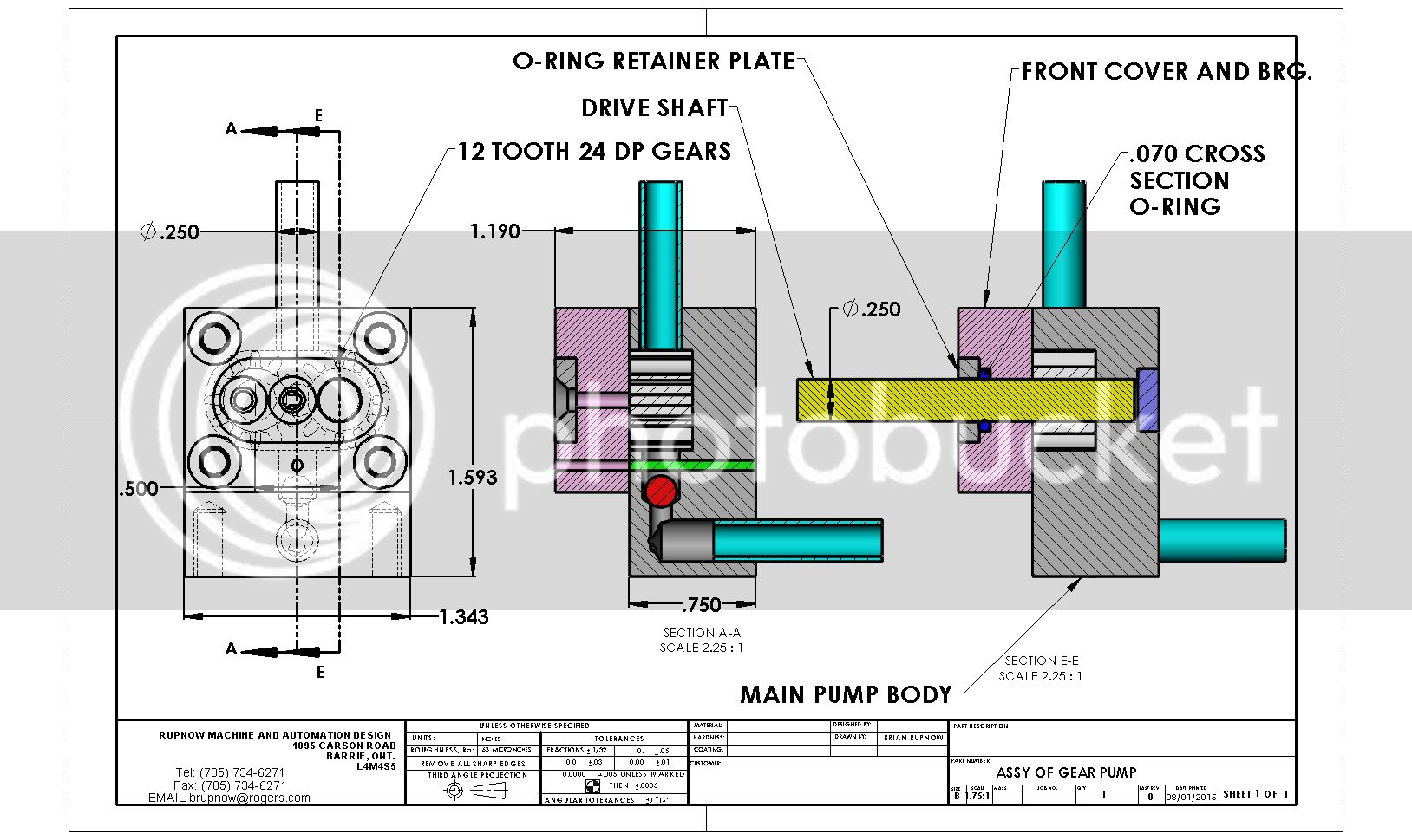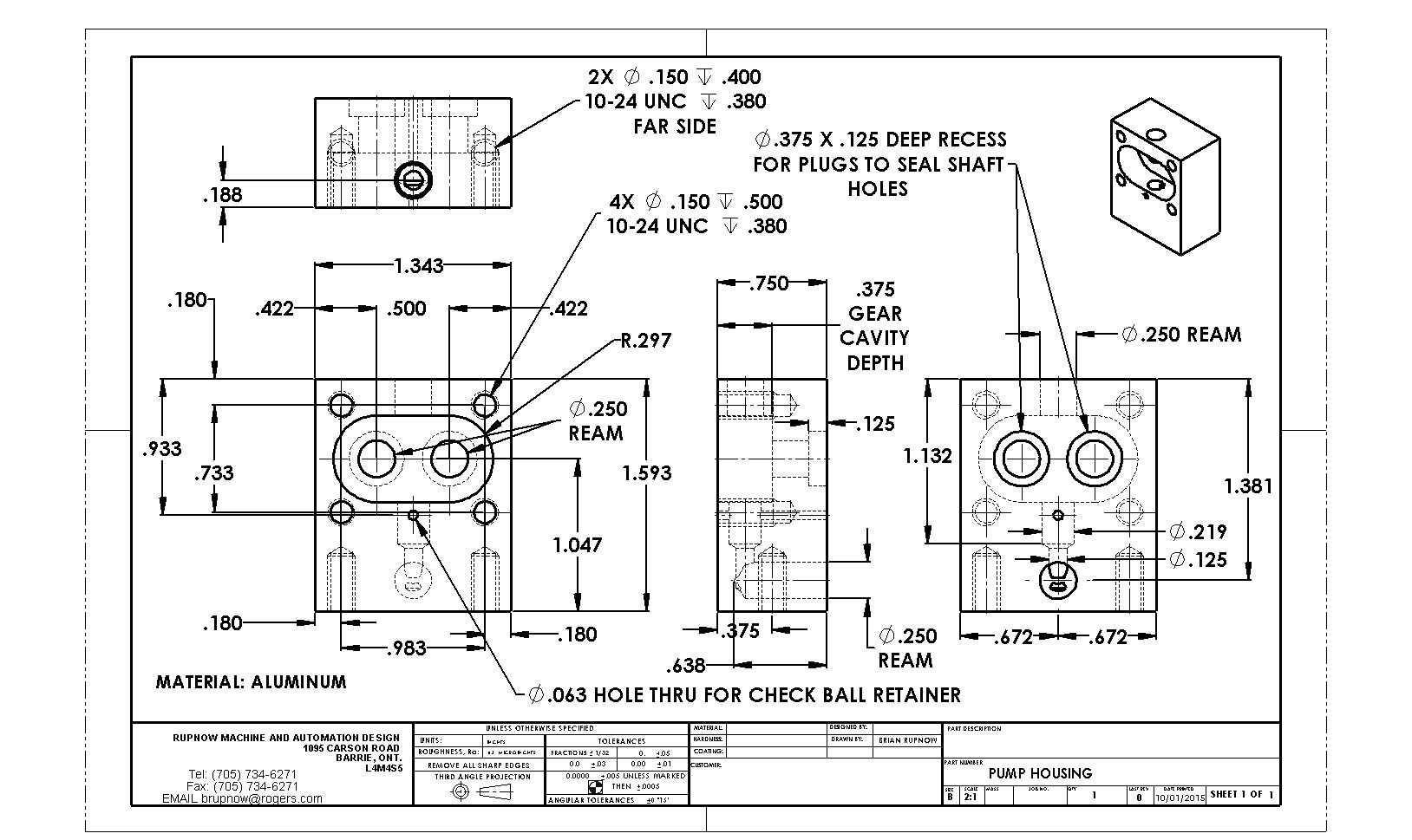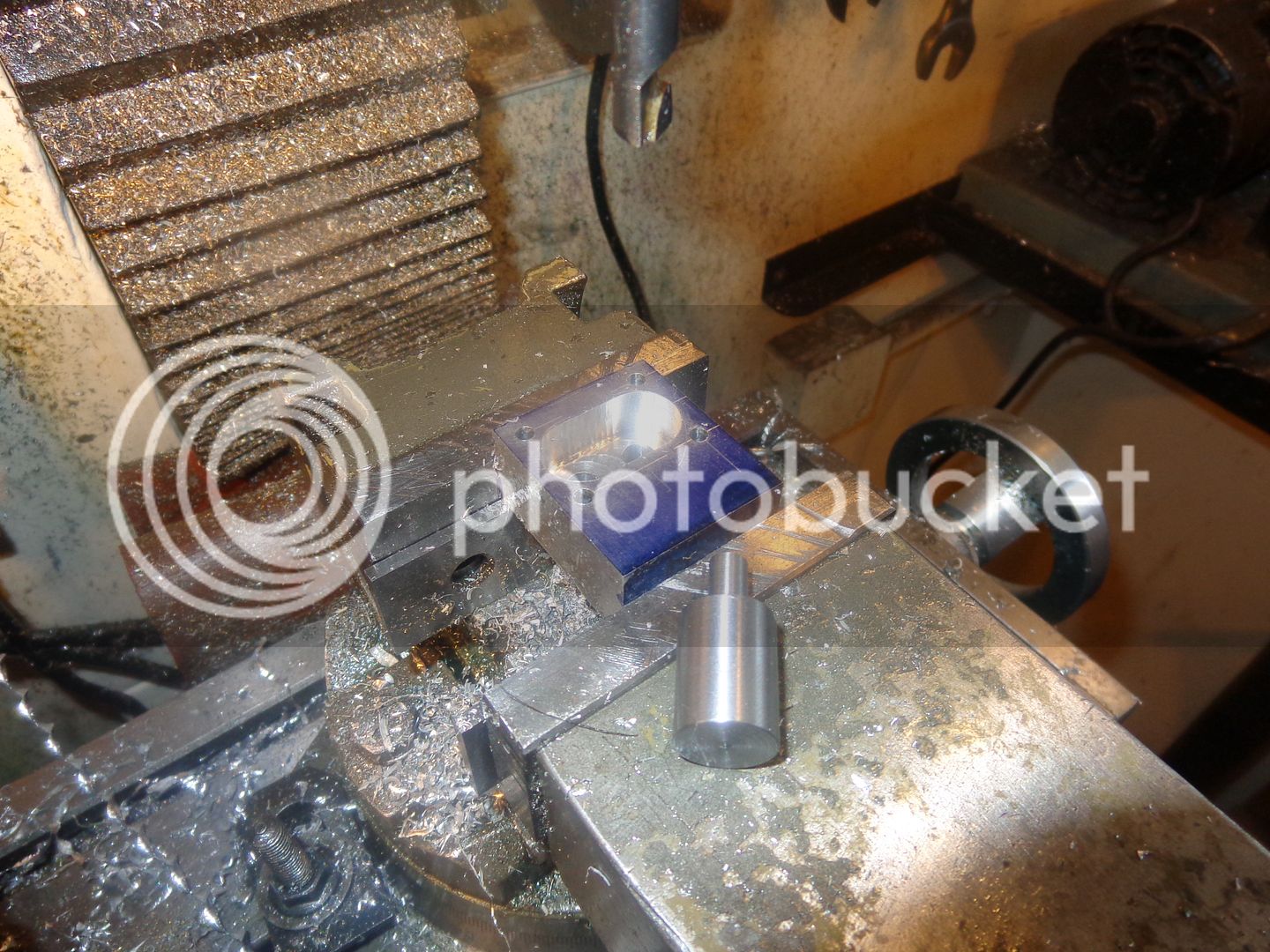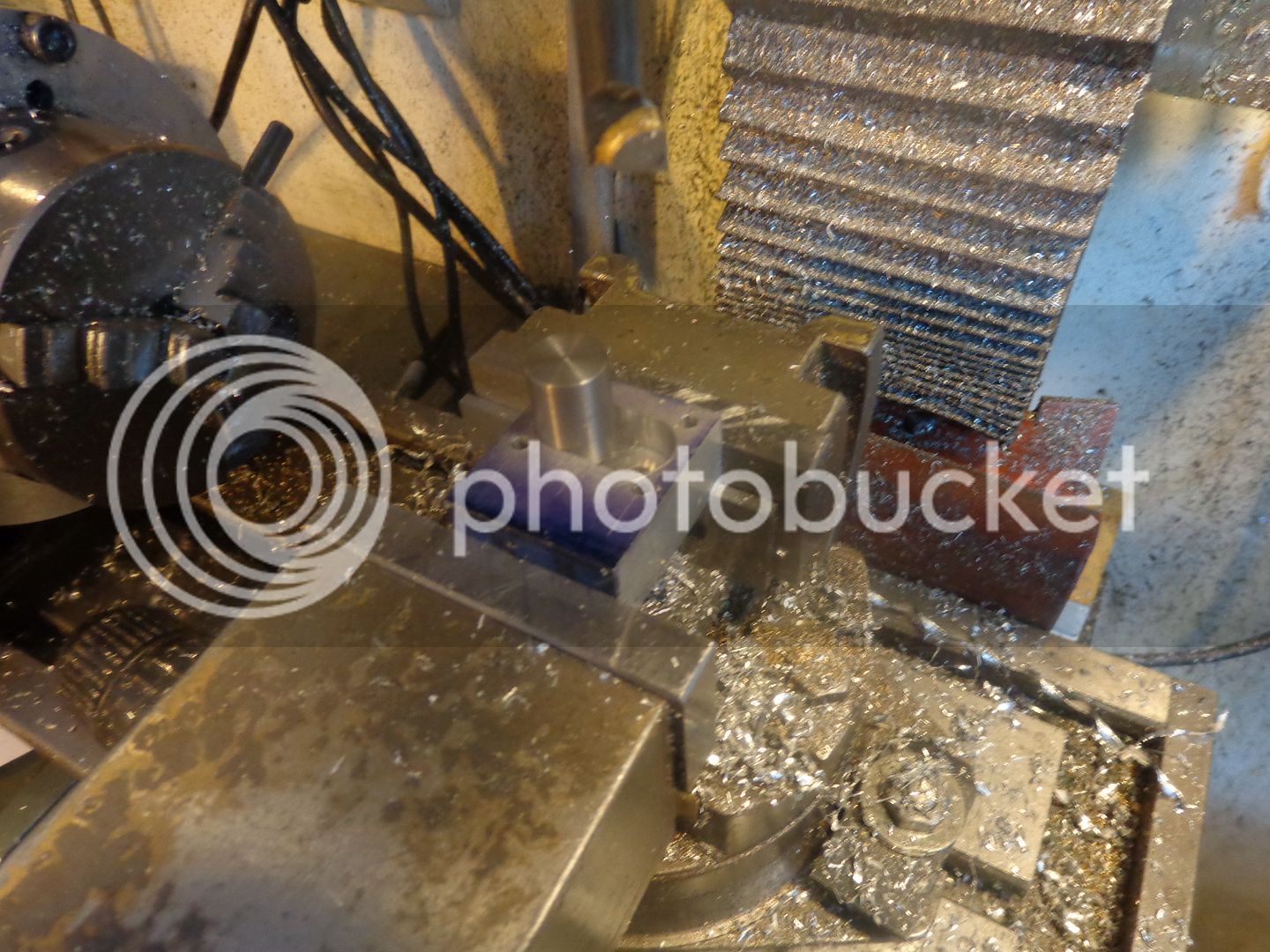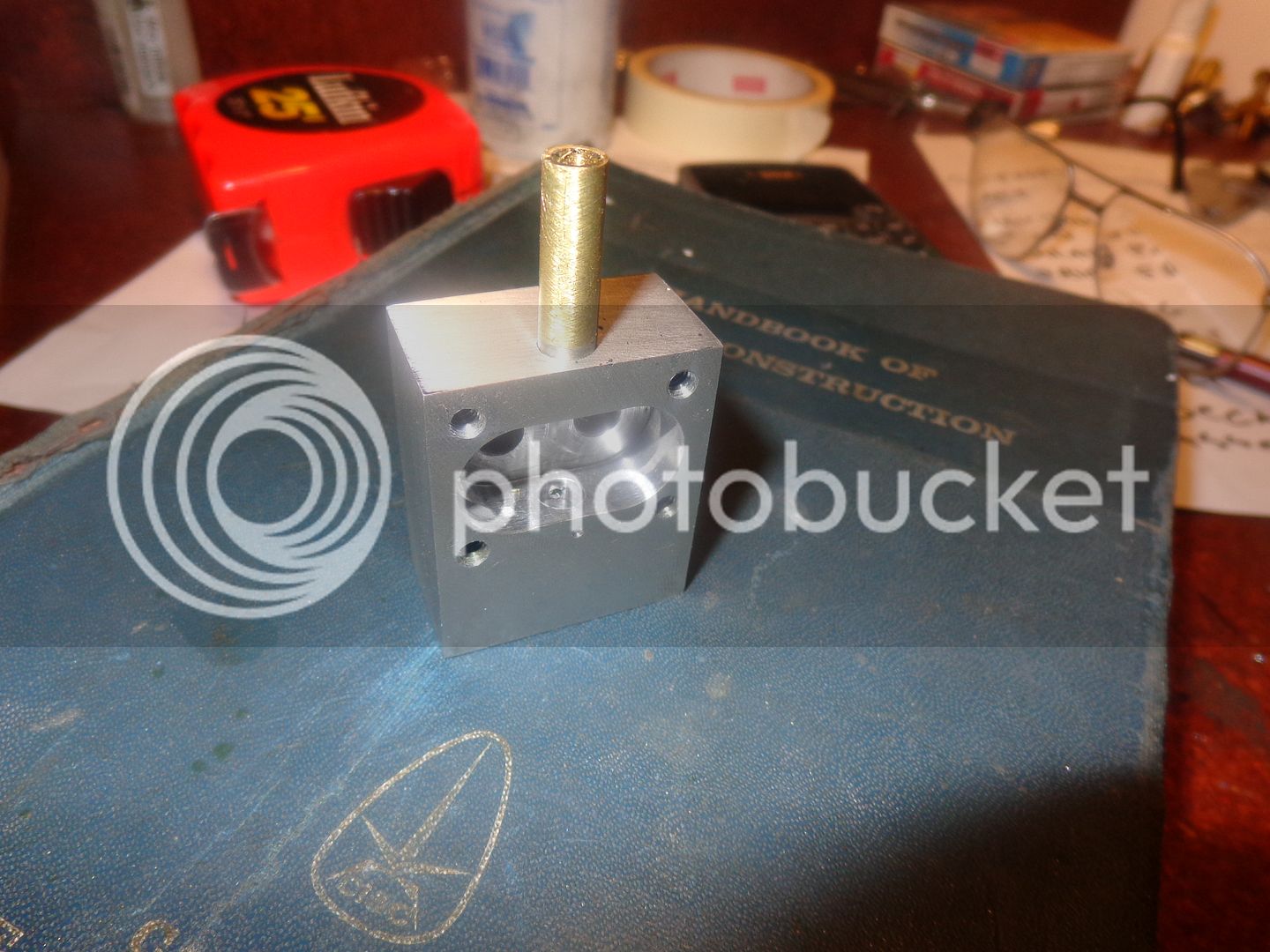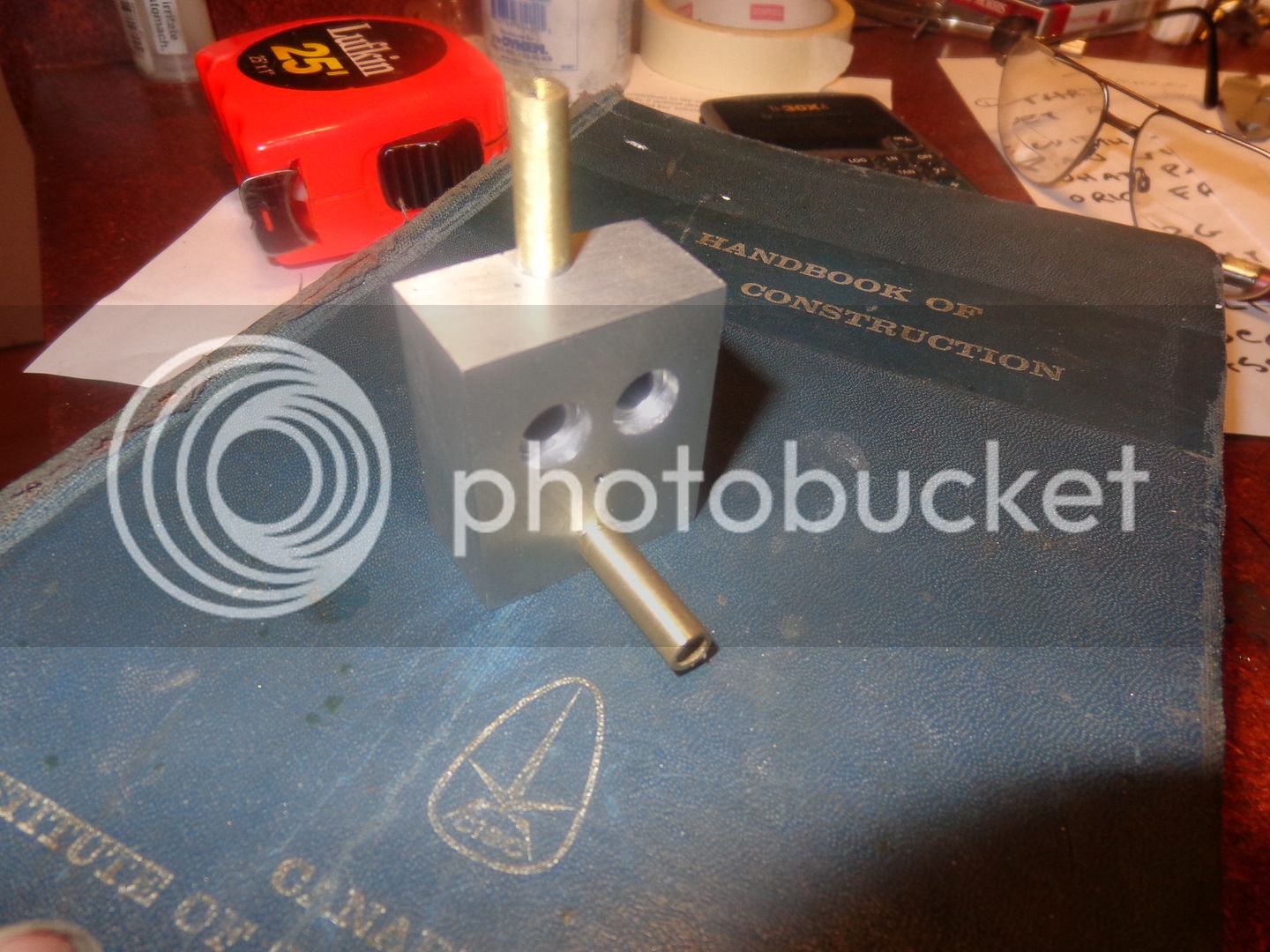My plan at the moment, concerning the gear cavity is to set the material up in my milling vise with a pair of parallels under it for some clearance, drill and ream the two 0.25" through holes and set the X axis mill stops up so that I can crank the table back and forth between the two hole positions without worrying about reading the dials all the time. Then I will use a 4 flute 1/2" diameter end mill and plunge cut to .375" deep at the center of each of the previously drilled and reamed 1/4" holes. Then I will back the cutter up vertically until it is just clear of the material, then lower it in .010" to .015" increments and crank the table back and forth between the pre-set stops until the material between the two 1/2" holes is removed. Then I will make a steel "test shaft" about 1" long with the major diameter at 0.594" diameter and 1/2" at one end turned to 0.25" diameter.---Are ya with me so far? --Then I set up my boring head and poised over the center of one of the holes, keep dialing it larger and larger and take full depth 3/8" plunge cuts until I reach a point where my "test shaft" will fit into the 1/4" reamed hole and fit into the bored hole. then I will back the boring head up until it clears the top of the material, move the table up to the next table stop and fully plunge cut the other hole at the same setting. Then back the boring tool up vertically again to clear the material, advance it in .010" to /015" increments, and "walk it back and forth" between the two holes to remove the material between the holes, to the point where the slot matches the dimensions on the drawing. If the bottom of the slot isn't nice and smooth, I will chuck up a piece of .594" diameter steel shaft and "burnish" the bottom of the slot with a bit of 600 grit lapping past.--Does that sound like a reasonable approach?







